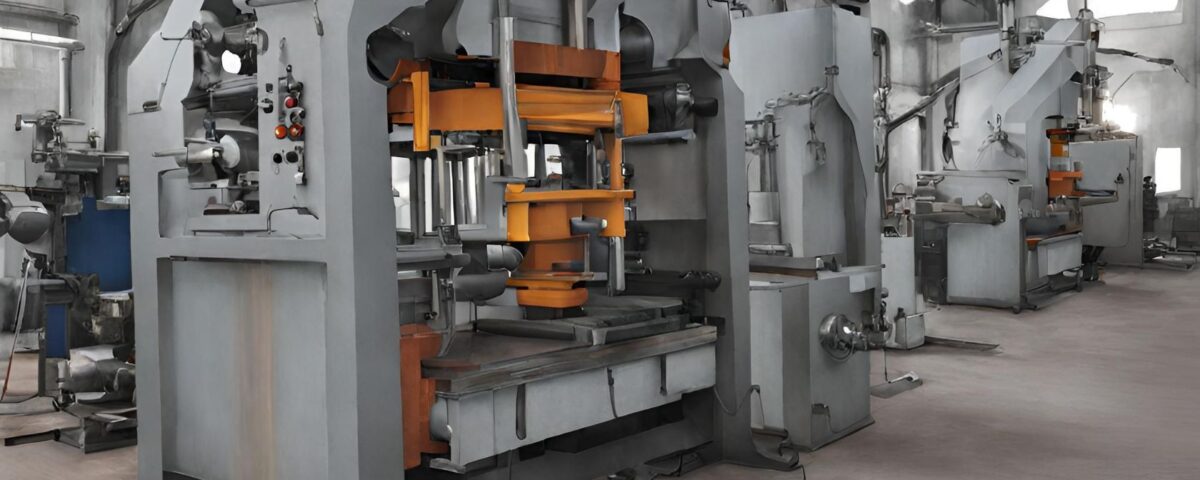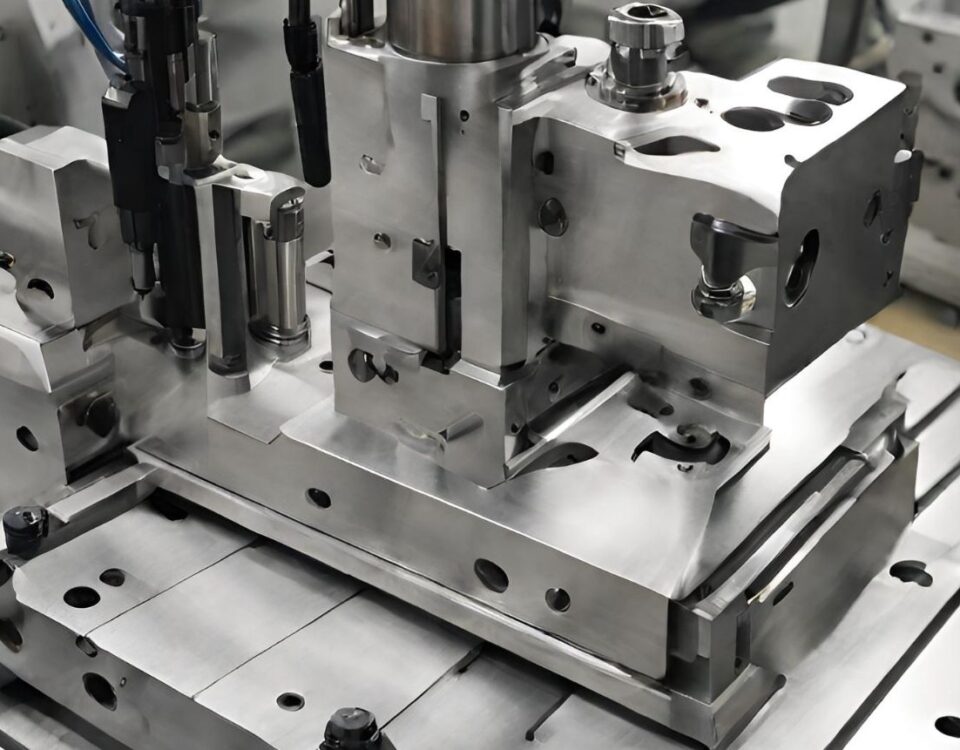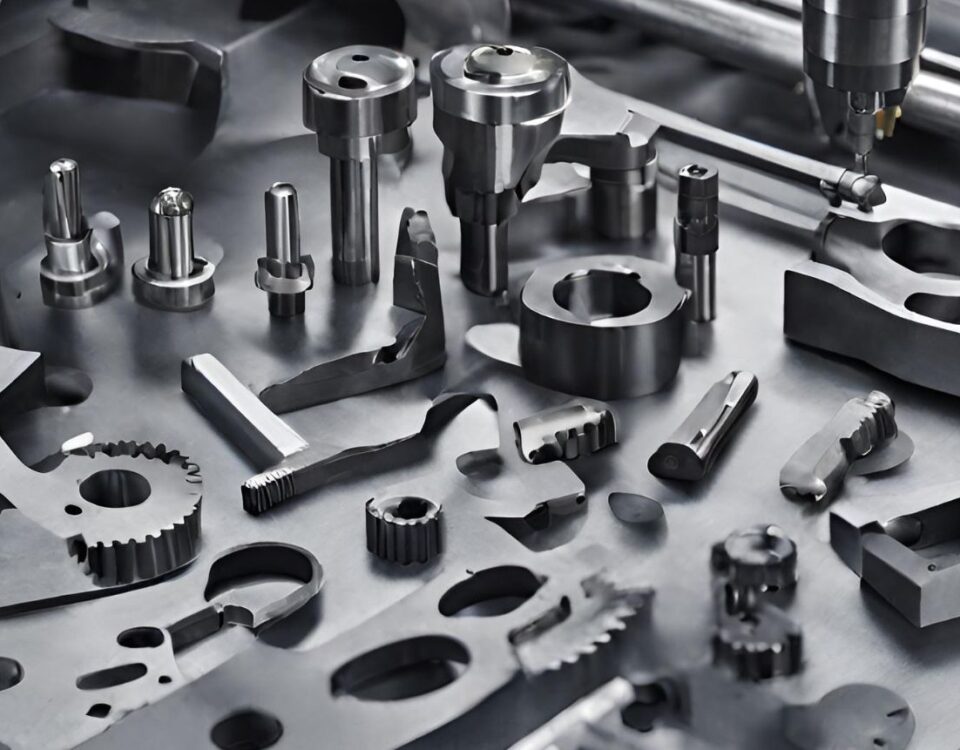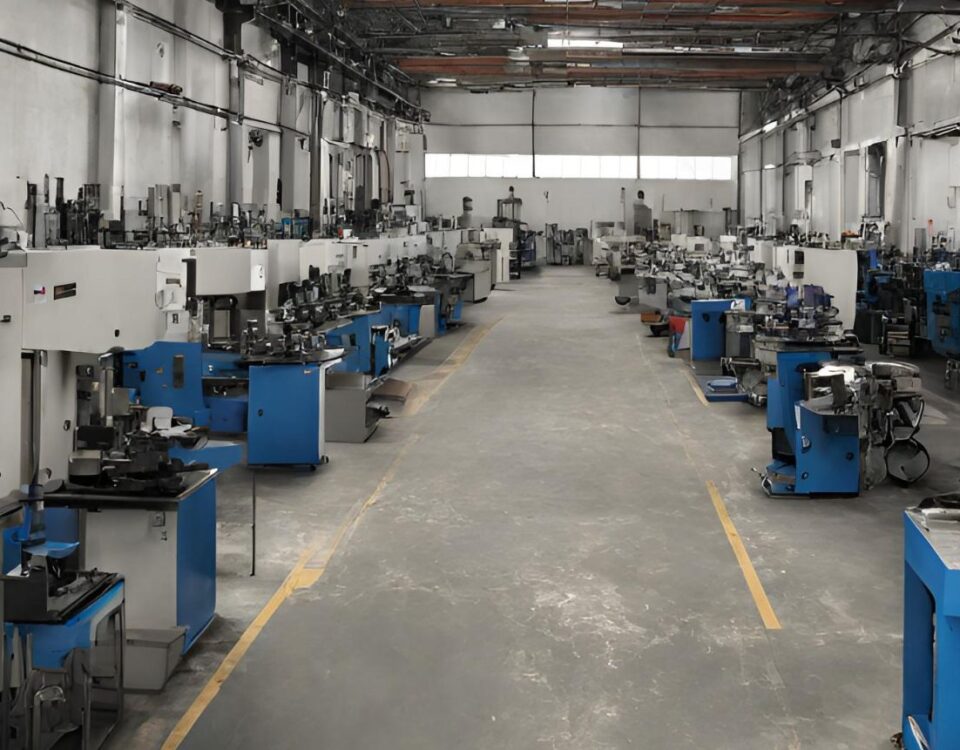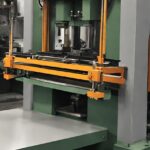
What is Custom Metal Stamping?
3 April 2024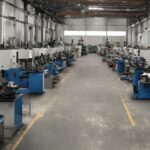
The Ultimate Guide to Finding the Best Machining Shop for Your Needs
8 April 2024Introduction
In the world of manufacturing and metalworking, aluminum casting stands out as a pivotal process for creating durable and intricate parts used across various industries, including electronics, military, aerospace, medical, automotive, robotics, and industrial machinery. As a business specializing in precision stamping parts and sheet metal fabrication, understanding the fundamentals of aluminum casting can significantly enhance our ability to offer custom solutions to our clients. This guide aims to demystify aluminum casting for beginners, highlighting its significance, various methods, advantages, and key considerations in the casting process.
Understanding Aluminum Casting
What is Aluminum Casting?
Aluminum casting involves pouring molten aluminum into a mold to create parts of desired shapes and sizes. Once the aluminum solidifies, the mold is removed, revealing a component that mirrors the mold's internal geometry. This process is favored for its ability to produce complex shapes with high precision and excellent surface finishes.
The Importance of Aluminum
Aluminum's popularity in casting is attributed to its lightweight, strength, corrosion resistance, and excellent thermal and electrical conductivity. These properties make aluminum cast parts indispensable in many sectors, especially where weight reduction without compromising strength is crucial.
Types of Aluminum Casting Processes
| Casting Process | Description | Advantages | Challenges | Best for |
|---|---|---|---|---|
| Sand Casting | Involves creating a sand-based mold where molten aluminum is poured. The mold is destroyed to retrieve the cast part. | Cost-effective, versatile for large components, no size limitations. | Rough surface finish, lower dimensional accuracy, mold cannot be reused. | Low-volume production, large parts, complex geometries. |
| Die Casting | Uses high pressure to force molten aluminum into a reusable metal mold. It's fast and suitable for high-volume production. | High production speed, excellent dimensional accuracy, smooth surface finish. | High upfront costs for dies, size limitations, not suitable for high melting point alloys. | High-volume production of small to medium parts with thin walls and detailed features. |
| Investment Casting | Also known as lost wax casting, this process involves creating a wax pattern, coating it with a refractory material to form a mold, then melting the wax away and casting the metal. | Excellent dimensional accuracy, ability to produce complex shapes, good surface finish. | Time-consuming, relatively expensive, limited to smaller parts. | Precision components with complex geometries and fine details. |
| Permanent Mold Casting | Molten aluminum is poured into a reusable metal mold. It is less rapid than die casting but offers better material properties. | Good dimensional accuracy, smoother surface than sand casting, mold can be reused. | Higher mold costs than sand casting, not as precise as die casting, limited part complexity. | Medium to high volume production of parts requiring better mechanical properties than sand castings. |

Design Considerations for Aluminum Casting
Draft Angles and Tolerances
- Draft Angles: Essential for removing the casting from the mold without damage, draft angles should be carefully planned to facilitate easy release while maintaining the integrity of the cast part. The recommended draft angle can vary based on the depth of the mold and the surface finish of the mold cavity but typically ranges from 1° to 3° for aluminum castings.
- Tolerances: Setting realistic tolerances is critical for functional and assembly purposes. Factors such as the casting process selected, the complexity of the design, and the material properties of the aluminum alloy play a significant role in determining achievable tolerances. Precision in this area ensures that parts fit and function as intended without requiring excessive post-processing.
Material Selection and Properties
- Alloy Selection: The choice of aluminum alloy affects every aspect of the casting, from fluidity and shrinkage rates to strength and corrosion resistance. Commonly used alloys include A356, A380, and A383, each offering unique benefits. For instance, A356 is favored for its excellent strength and resistance to corrosion, making it ideal for aerospace and automotive applications.
- Thermal Properties: Understanding the thermal behavior of chosen alloys, such as melting temperature and thermal expansion, is vital for mold design and process control. These properties influence decisions on mold materials and the casting environment to minimize defects related to thermal mismatches.
Surface Finish and Texture
- Surface Quality: The desired surface finish of the final casting affects mold design, the choice of casting process, and post-processing requirements. Factors like mold material and finish, casting speed, and cooling rates need to be optimized to achieve the target surface quality.
- Texturing: Surface textures can be integrated into the mold design for aesthetic or functional purposes. Textured finishes can improve grip, enhance aesthetics, or mask parting lines and defects. Planning for texture in the mold design phase can reduce the need for additional surface finishing processes.
Riser and Gate Design
- Riser Design: Risers supply additional molten metal to the casting as it solidifies and shrinks. Proper riser design is crucial to prevent cavities in the final part. The size and placement of risers significantly impact the yield and quality of the casting, making it a critical design consideration.
- Gate Design: Gates are the channels through which molten metal enters the mold cavity. The gate design influences the flow and cooling of the metal, affecting the occurrence of defects like porosity and inclusions. Optimizing gate size and location can improve the overall quality and appearance of the casting.
Mold and Core Considerations
- Mold Material: The choice of mold material impacts the thermal characteristics of the casting process and the surface finish of the cast part. Durable materials that can withstand high temperatures are essential for permanent molds, while sand molds offer flexibility in shape and complexity.
- Core Design: Cores are used to create hollow features or cavities within the casting. Designing cores that are easy to remove and do not shift during casting is essential for achieving dimensional accuracy and reducing the likelihood of defects.
Aluminum Casting Process Optimization
Optimizing the aluminum casting process is crucial for enhancing efficiency, reducing waste, and ensuring the production of high-quality parts. This involves a holistic approach that considers every step of the casting process, from initial mold design to the final quality control checks. Key areas of focus include the refinement of mold designs to improve thermal balance and material flow, the selection of appropriate casting techniques to minimize defects, and the implementation of advanced melting and pouring practices to control the properties of the molten aluminum. Additionally, employing rigorous quality control measures, such as real-time monitoring and post-casting inspections, helps in identifying and addressing issues promptly. By continuously seeking improvements in these areas, manufacturers can achieve significant advancements in production speed, cost-effectiveness, and the overall quality of aluminum cast parts, ultimately satisfying the stringent demands of industries relying on precision-engineered components.
Incorporating state-of-the-art technologies and methodologies into the aluminum casting process further drives its optimization, leading to groundbreaking improvements in efficiency and product quality. Leveraging simulation software for mold and process design enables engineers to predict and mitigate potential issues before production begins, significantly reducing trial and error and shortening development cycles. Advanced melting technologies that offer precise temperature control and cleaner melting conditions result in superior aluminum alloy properties and reduced material wastage. Furthermore, the adoption of automation and robotics in handling and processing tasks not only minimizes human error but also enhances safety and consistency across production batches. Emphasizing sustainable practices, such as recycling scrap metal and optimizing energy consumption, aligns with global environmental standards and corporate responsibility goals. Through these continuous improvements, the aluminum casting industry is poised to meet the evolving challenges of the market, delivering high-precision and durable components essential for modern applications in aerospace, automotive, electronics, and beyond.

Applications and Innovations in Aluminum Casting
The aluminum casting process is renowned for its flexibility and efficiency, making it a fundamental method in modern manufacturing landscapes. It caters to a wide range of industries, producing parts that meet stringent requirements for strength, precision, and durability. This chapter delves deeper into the diverse applications of aluminum casting and showcases its role in spurring innovation across different sectors, effectively tackling complex engineering problems.
In the aerospace and aviation sectors, aluminum casting is crucial for fabricating components that balance lightness with high strength and resistance to environmental pressures. This process is instrumental in crafting structural frames, engine parts, and avionics enclosures, which are essential in fulfilling the industry’s rigorous safety and performance standards. Such applications significantly contribute to fuel efficiency and the durability of aircraft, underscoring the process's value in high-stakes manufacturing environments.
The automotive industry also reaps substantial benefits from aluminum casting, leveraging it to produce engine components, transmission cases, and vehicle structural elements. As the industry progresses towards electric vehicles and prioritizes fuel efficiency, aluminum's lightweight attribute becomes increasingly significant. It plays a pivotal role in enhancing vehicle range and minimizing emissions, aligning with the sector's environmental sustainability objectives.
In the realm of electronics and telecommunications, the precision and versatility of aluminum casting are paramount. The process facilitates the production of components that offer exceptional electromagnetic shielding, efficient heat dissipation for computing and telecom hardware, and increased durability for consumer electronics. Aluminum casting's ability to produce finely detailed parts meets the dynamic demands of technology products, from advanced smartphones to sophisticated server racks.
Moreover, aluminum casting extends its utility to the medical device sector, where it enables the creation of lightweight, durable components for medical instruments and equipment. These applications demand exacting standards for precision, material cleanliness, and reliability, making aluminum casting a preferred choice for manufacturers.
The innovation trajectory of aluminum casting is on an upward curve, with technological advancements enhancing its applications, efficiency, and environmental sustainability. The integration of AI and machine learning for process refinement, alongside the adoption of 3D printing for complex mold designs and the development of innovative alloy compositions, marks a significant leap forward. These advancements not only elevate the quality and functionality of cast parts but also contribute to reducing waste and optimizing energy use. Such progress aligns with the global push towards more sustainable manufacturing practices.
As industry needs evolve and the quest for advanced, high-performance components intensifies, the importance of aluminum casting in the manufacturing sector is poised to grow. Its adaptability to new challenges and the continuous technological advancements ensure that aluminum casting will remain a key facilitator of innovation and operational efficiency in the foreseeable future.
FAQ
1.What is Aluminum Casting?
Answer: Aluminum casting is a manufacturing process that involves pouring molten aluminum into a mold to form a part. Once the aluminum solidifies, the mold is removed, revealing a component that replicates the mold's shape and features. This process is favored for its ability to produce complex shapes with high precision and excellent surface finishes.
2. What Are the Main Types of Aluminum Casting Processes?
Answer: The main types of aluminum casting processes include sand casting, die casting, investment casting, and permanent mold casting. Each method has its unique advantages and is chosen based on the requirements of the final part, such as its size, complexity, and the desired surface finish.
3. Why Choose Aluminum for Casting?
Answer: Aluminum is chosen for casting due to its lightweight, strength, corrosion resistance, and excellent thermal and electrical conductivity. These properties make it ideal for a wide range of applications, including automotive, aerospace, electronics, and consumer goods, where durability and performance are critical.
4. How Does One Ensure Quality in Aluminum Casting?
Answer: Ensuring quality in aluminum casting involves careful design of the mold, precise control of the melting and pouring processes, and rigorous quality control checks. This includes visual inspections, dimensional measurements, and, in some cases, advanced non-destructive testing methods to detect internal defects.
5. Can Aluminum Castings Be Recycled?
Answer: Yes, aluminum castings can be recycled. Aluminum retains its properties even after recycling, making it a highly sustainable material. The recycling process involves melting down scrap aluminum, which can then be reused in new casting processes, significantly reducing waste and energy consumption.
6. What Are the Latest Innovations in Aluminum Casting?
Answer: The latest innovations in aluminum casting include the use of simulation software to predict and optimize casting outcomes, the adoption of 3D printing technologies for creating complex molds, and the development of new aluminum alloys with enhanced properties. These advancements are making aluminum casting more efficient, versatile, and capable of meeting the demanding specifications of modern applications.
Conclusion
In conclusion, aluminum casting stands as a cornerstone in the manufacturing sector, offering unmatched versatility, efficiency, and the ability to produce components with complex geometries and exceptional properties. From automotive and aerospace to electronics and beyond, the applications of aluminum casting are vast, driving innovation and meeting the stringent requirements of various industries. With ongoing advancements in technology, including simulation software, 3D printing, and the development of new alloys, aluminum casting is set to reach new heights of precision and sustainability. Whether you're looking to enhance your product's performance or seeking sustainable manufacturing solutions, exploring the possibilities with aluminum casting is a step toward future-proofing your production. We encourage manufacturers, designers, and engineers to delve deeper into aluminum casting's potential and consider it for their next project. Let's embrace the innovations in aluminum casting together, pushing the boundaries of what's possible in manufacturing.

